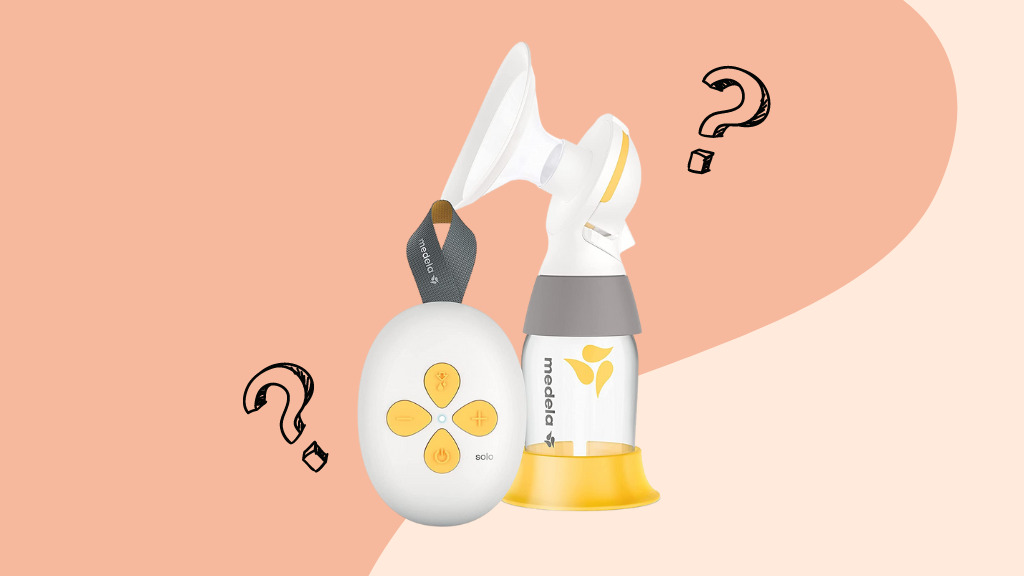
Table of Contents
As and how you complete the baby’s course of breastfeeding, there will come a time for you to bid farewell to your best pal – the breast pump!
Call it as silly as it may sound, it is only those who understand how crucial and a life-changer these breast pumps have been, helping you strive through the difficult times, together. But what does one need to do with the old breast pumps? It makes sense to not simply toss this trusty companion out when done with, so what next?
To help you understand the next steps, let’s quickly jump to the possible steps on “what to do with old breast pump.” Let’s get started!
What to Do With Old Breast Pump: Your Guide To Next Steps
Here are possible pointers on what to do with an old breast pump:
1) Storing For The Next One!
If you have plans for another child or are not sure if you’d be planning for more than one baby, to be on the saver end you might want to store your breast pump. It is always easy to get a new pump through insurance for each baby, but having an extra one handy can be quite useful to have as a backup.
Having more than one is great to also distribute in more than one place, that is, to leave one at work and the other one in the car or your house without having to lug the pump every day, wherever you go.
To help you store your breast pump in the right manner, here is a step by step guide to follow and keep the breast pump in good condition for a few years down the lane:
- Start by cleaning your breast pump and wipe down all the pump accessories that cannot be washed, such as the car adapter, charger, etc.
- Sterilize the bottles and all the pump parts and leave them to air dry.
- When dried, place them in a gallon-sized Ziploc bag or plastic containers to store safely.
- Once you put everything in the bag, store it in a place that is temperature-controlled. So, if you’re to choose between the draughty basement or the garage that gets hot in the summer, you’d want to choose the basement.
As and when you get ready to use the breast pump again, make sure to wash it thoroughly and sterilize the parts and bottles that you plan on reusing.
Note – Old breast pump parts could at times lose their suction, therefore it’s best to replace its parts if that’s the case, on a regular basis. Best to purchase a new set of pump parts when you plan to use it next. Then, compare the suction level of both; the old and the new pump parts. Doing so can help you compare the level of suction and understand if the old parts aren’t doing their job as needed. It all depends on how well it was kept and stored.
2) Selling the Breast Pump Pal
If at all you are done using the breast pump completely, the next best thing that you can do is sell the breast pump or donate it. Adding here, try and sell the breast pump to a close friend/family member, only. On the other hand, if you’ve been using an open system pump, avoid selling or donating it.
Closed breast system pumps are those with a barrier between the milk and the pump motor, whereas the open systems do not have this and it’s practically impossible to sanitize the open breast pump systems, even if new tubing and parts are purchased.
3) Donating Your Breast Pump
For donating a breast pump, you can reach out to charitable organizations. Having said that, they would only accept open system pumps due to the liability concerns with personal medical devices.
You could also offer breast pumps for free on Freecycle or Craigslist to a mom who might be in need of it. It’s better to always confirm though.
4) Recycling the Breast Pump
In case you are unable to sell or give the breast pump away when used, recycling it is the best option to choose. There are many breast pump manufacturers, to name Hygeia and Medela who have pump recycling programs.
The way these programs work is by requesting a shipping label and shipping the breast pump and charger to them. (keep in mind, you’d have to pay to cover the shipping; the label only has the correct address and teh confirmation number). Once done, the third-party provider breaks the parts down and recycles whatever they can.
In certain cases, the manufacturer will recycle the pumps. In case the pump manufacturer doesn’t have a recycling program and you think they must, all you need to do is call or email them! The Medela program, as stated above, also started via a petition.
To Conclude:
We hope the blog post above has helped you look at some of the possible solutions for a used breast pump and how you could dispose of the same via the options as stated above. We’d recommend following the appropriate steps/measures for the old breast pumps.
What To Do With Old Breast Pump FAQs
1) Do Spectra breast pumps get recycled?
2) How are closed breast pumps different from the open breast pumps?
3) How to store an old breast pump in the right manner?
4) Is selling an old breast pump a good option?
5) What are the options available for recycling an old breast pump?
Reviewed By:

Leslie Owens - RN IBCLC, Lactation Coach & Consultant
Leslie Owens is a Perinatal RN and IBCLC based in the Atlanta area. She prides herself as a human milk advocate, facilitator, and clinician. She has supported pregnant and postpartum families for over 10 years in the perinatal space. Her passion for birth and lactation began with her own personal experiences, birthing and breastfeeding three children, including twins.
Leslie currently owns and operates Mother Nurture Maternity, a private practice where she provides breastfeeding education and support, as well as coaching and mentorship to aspiring and new IBCLCs, She is committed to providing accessible, skilled, compassionate, and equitable care to all.









